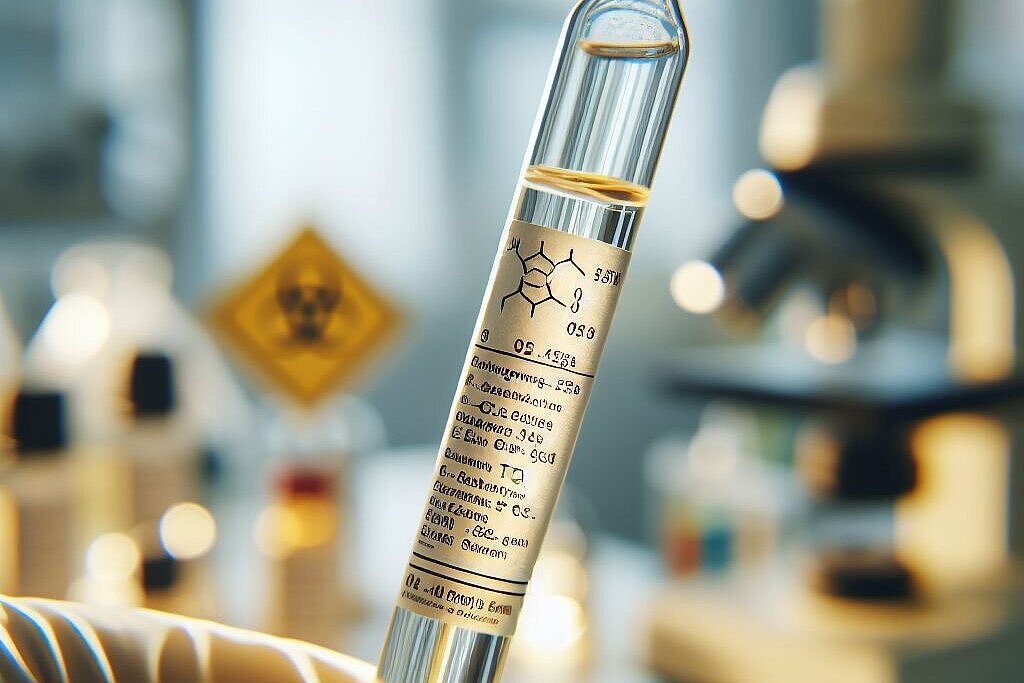Dichloromethane

Dichloromethane is an organic chemical compound consisting of two chlorine atoms and a methane molecule. The molecular formula is CH2Cl2. Dichloromethane is used as a solvent, degreaser, paint remover and in the chemical industry. It is a colorless liquid with a sweet odor that is highly flammable and heavier than air.
What are the advantages of dichloromethane?
Dichloromethane has several advantages as a solvent, as it can dissolve many organic substances, evaporates quickly and is non-flammable. It is also used to decaffeinate coffee and tea as it can extract the caffeine without affecting the taste. Dichloromethane also has a low toxicity to humans at short exposure and low concentration.
What are the disadvantages of dichloromethane?
However, dichloromethane also has many disadvantages, especially for dogs. Dichloromethane can cause serious damage to health with prolonged or severe exposure, such as:
- Skin irritation, burns and allergies
- Eye irritation and damage
- Respiratory tract irritation, coughing, shortness of breath and pulmonary edema
- Headaches, dizziness, fatigue and loss of consciousness
- Liver and kidney damage
- Risk of cancer
Dichloromethane can also damage the ozone layer and contribute to the greenhouse effect.
How can dogs come into contact with dichloromethane?
Dogs can come into contact with dichloromethane if they swallow or inhale products containing this substance or absorb it through their skin. This can happen, for example, if they:
- Licking or drinking paint remover or other solvents
- Play or chew with contaminated objects or surfaces
- Inhale the vapor of dichloromethane that escapes from open containers or when using products
- Getting dichloromethane on your fur or skin
How can you recognize dichloromethane poisoning?
Dichloromethane poisoning can cause different symptoms depending on the type, duration and amount of exposure. The most common signs include
- Salivation, vomiting and diarrhea
- Apathy, weakness and tremors
- Coughing, wheezing and nosebleeds
- Red or watery eyes
- Seizures or coma
How can dichloromethane poisoning be treated?
Poisoning with dichloromethane requires immediate veterinary care. The vet will try to prevent further ingestion of dichloromethane, for example by
- Pumping out the stomach or administering activated charcoal if the dog has swallowed anything
- Washing the skin or coat with soap and water if the dog has touched anything
- Oxygenate or ventilate the dog if the dog has inhaled something
The vet will also monitor the dog's vital signs and administer medication to relieve symptoms if necessary.
How to avoid dichloromethane poisoning?
Dichloromethane poisoning can be avoided by taking some precautions, such as:
- Keeping products containing dichloromethane safe and out of the reach of dogs
- Use products containing dichloromethane only in well-ventilated areas and away from naked flames or hot surfaces
- Properly dispose of or recycle products containing dichloromethane after use
- Keep dogs away from areas where dichloromethane is used or stored
- Have dogs examined regularly and watch for signs of poisoning
Dichloromethane is a dangerous ingredient for dogs that can cause serious health problems or even death. Dogs can come into contact with dichloromethane if they swallow or inhale products containing this substance or ingest it through the skin. Poisoning with dichloromethane requires immediate veterinary care. Poisoning with dichloromethane can be avoided by taking a few precautions.
If you notice any signs of hypersensitivity or poisoning in your dog, you should see your vet immediately. We are not a substitute for a vet, but we try to be as accurate as possible. Every dog reacts differently and we recommend you get a second opinion or consult your vet if in doubt.
Stay healthy and take good care of your four-legged friend!😊
Similar to Dichloromethane
Chloroform can be very toxic to dogs if inhaled, swallowed or absorbed through the skin. It can cause severe damage to the liver, kidneys, heart and brain. It can also cause cancer and damage the...
Carbon tetrachloride (CCl4) is a chemical compound produced by the chlorination of methane or chloroform. It is a colorless, heavy liquid that was widely used for its properties as a solvent, in...
Toluene is a colorless, water-insoluble liquid with a characteristic sweet smell, similar to that of gasoline. Chemically speaking, toluene belongs to the aromatic hydrocarbons and is obtained from...
Hexane is an aliphatic hydrocarbon with the chemical formula C6H14. It is a colorless liquid with a slight gasoline-like odor that is mainly obtained from the refining of petroleum. In industry,...


